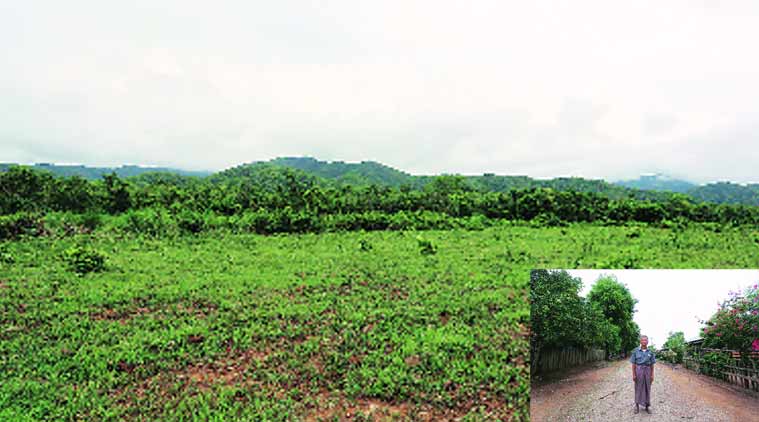“Suddenly, we heard a lot of shooting and bombs going off in the near distance. Boom, boom, boom. We were wondering what was happening,” 55-year-old Hemlet Guite, a village elder, said.

Esha Roy, Phaikoh(Indo-Myanmar border), 14 June 2015:
In this last Indian village in Manipur’s Ukhrul district, there is no telling where India ends and Myanmar begins. The boundary is not demarcated visibly, and the small teak huts standing on wooden stilts could be in either country. On the morning of June 9, sleepy, isolated Phaikoh was jolted by the sounds of Indian soldiers attacking Naga militant camps in the area in retaliation against the June 4 ambush of the 6 Dogra Regiment.
“Suddenly, we heard a lot of shooting and bombs going off in the near distance. Boom, boom, boom. We were wondering what was happening. We didn’t see any soldiers go through our village or in the surrounding jungles. We assume they must have gone very quietly at night, on foot,” 55-year-old Hemlet Guite, a village elder, said.
It was approximately 8 in the morning when Phaikoh first heard the “sounds of the battle” — around the time its 16 schoolchildren had just begun classes at the village school.
“We did see them coming back, though,” Guite said. “In the afternoon, it must have been two or three o’clock, a stream of Indian Army soldiers started walking into the village. Then the helicopters started coming. They landed on our football field, and the soldiers started to get on. It looked as though there were at least a hundred soldiers. There were two helicopters, and each made three trips. Some of the soldiers left on foot,’’ Guite added.
Sixty-five-year-old Hemkhoshei, a minister of the village council, said it was the first time he saw an Army chopper. “I was very excited. One Armyman told me to shut my eyes because there would be a lot of dust as the machine landed,” he laughed.
Sauntering easily into Myanmarese territory, stepping over the shallow, muddy trench that marks the border, Hemkhoshei pointed to the grey-blue hill rising above the treetops, its peak surrounded by wispy white clouds.
“That is Angko Chingbo hill,” he said. It is about 15 km inside Myanmar. The UNLF, PLA and KYKL have their camps there. That is where the Army went that day.
“We have heard that nothing is left of the PLA camp now. But we do not know if the Army managed to reach the UNLF camp. It is on the other side of the mountain, and very difficult to reach,” Hemkhoshei added. According to him, the PLA camp had more than a hundred residents.
Residents of Phaikoh said insurgents often traveled to border villages on the Indian side “for patrolling”. Cadres of the UNLF were the most frequent visitors, they said. “They come at least once a month, sometimes more often. They talk to us, eat their lunch, and go back. But we never have to feed them. They give us money to buy rice, and cook for themselves. Twenty, or even 40 insurgents come at a time. We haven’t seen any since Tuesday (June 9), though,” said Janghen Jangkhohem, secretary of the village council. Guite said the villagers have a good rapport with the UNLF. “There is no doctor or pharmacy in the village. So the UNLF insurgents sometimes give us medicines. Malaria is endemic here, and they often hold medical camps in the village, to which they bring a doctor. In return, they ask us for information — on who comes here, and what we hear about the Army. Last Christmas, the UNLF gave us money to buy a pig or cow for a feast,” Guite said. Hemkhoshei said UNLF cadres sometimes held meetings with the village council or elders. “They talk to us of development… roads, better schools, medical facilities, electricity. They have told us that they would help us get all these things,” he said. No resident of Phaikoh has ever visited any of the camps, however. What they know about them is based on what they have heard from friends in Myanmar who visit the camps to sell their wares to the insurgents. “Since Tuesday, Myanmar has completely sealed off the border. We can’t even go to Mongjang, the neighbouring village on the other side. But hopefully, the restrictions will be lifted soon,” Guite said. Across a range of three hills closer to the Indian side of the border, at the village of Nampisha, villagers recalled the happenings of June 9. “Helicopters were flying in and out. Huge helicopters. We could here gunfire in the distance. We gathered at the church and I told my congregation to pray. I warned them not to stray far from the village. Not to even go out hunting. To just stay indoors and pray,” said pastor Akhui Kamkara. The 44 Assam Rifles has an outpost at Nampisha, villagers said, and they had tightened their vigil. No one was going towards Phaikoh, villagers said.
Published in The Indian Express.



